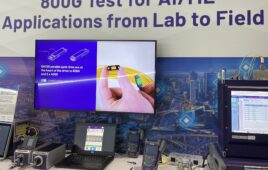To minimize issues from standing waves, engineers have long used Faraday rotation isolators that let forward-traveling signals pass to the load while attenuating reverse-traveling signals such as reflections. Higher frequencies, however, bring a new set of problems such as insertion loss that Micro Harmonics claims to have solved with its mmWave isolators. The series consists of ten models that range in frequency from 50 GHz–75 GHz to 220 GHz–325 GHz with a higher-frequency model on the way.
The short wavelengths at mmWave frequencies mean that isolators need be smaller that those used at lower frequencies. According to Micro Harmonics CEO David Porterfield, the highest possible isolation occurs when the reverse wave is rotated exactly 45° into the plane of the isolator’s resistive layer. Isolation can degrade by as much as 10 dB when the signal rotation is off by just 1 degree.
Insertion loss occurs when a device attenuates it incoming signal. Thus, an isolator or other component’s insertion loss must be low enough for its application. Isolators from Micro harmonics keep insertion loss to less than 1 dB at 75 GHz to 110 GHz and 2 dB from 220 GHz to 330 GHz. The figure below shows the isolator construction.

Isolators minimize energy from reverse-traveling signals by rotating phase.
The isolators minimize loss by using a short ferrite length that’s saturated with a strong magnetic bias field. That provides for the shortest possible length of ferrite to create the ideal 45° rotation.
In addition to high isolation and low return loss, an isolator needs to minimize signal reflections at its input port. Micro Harmonics claims a Voltage Standing Wave Ratio (VSWR) is a measure of the reflections at the input and output ports. These isolators have VSWR of 1.4:1 or better.





Tell Us What You Think!